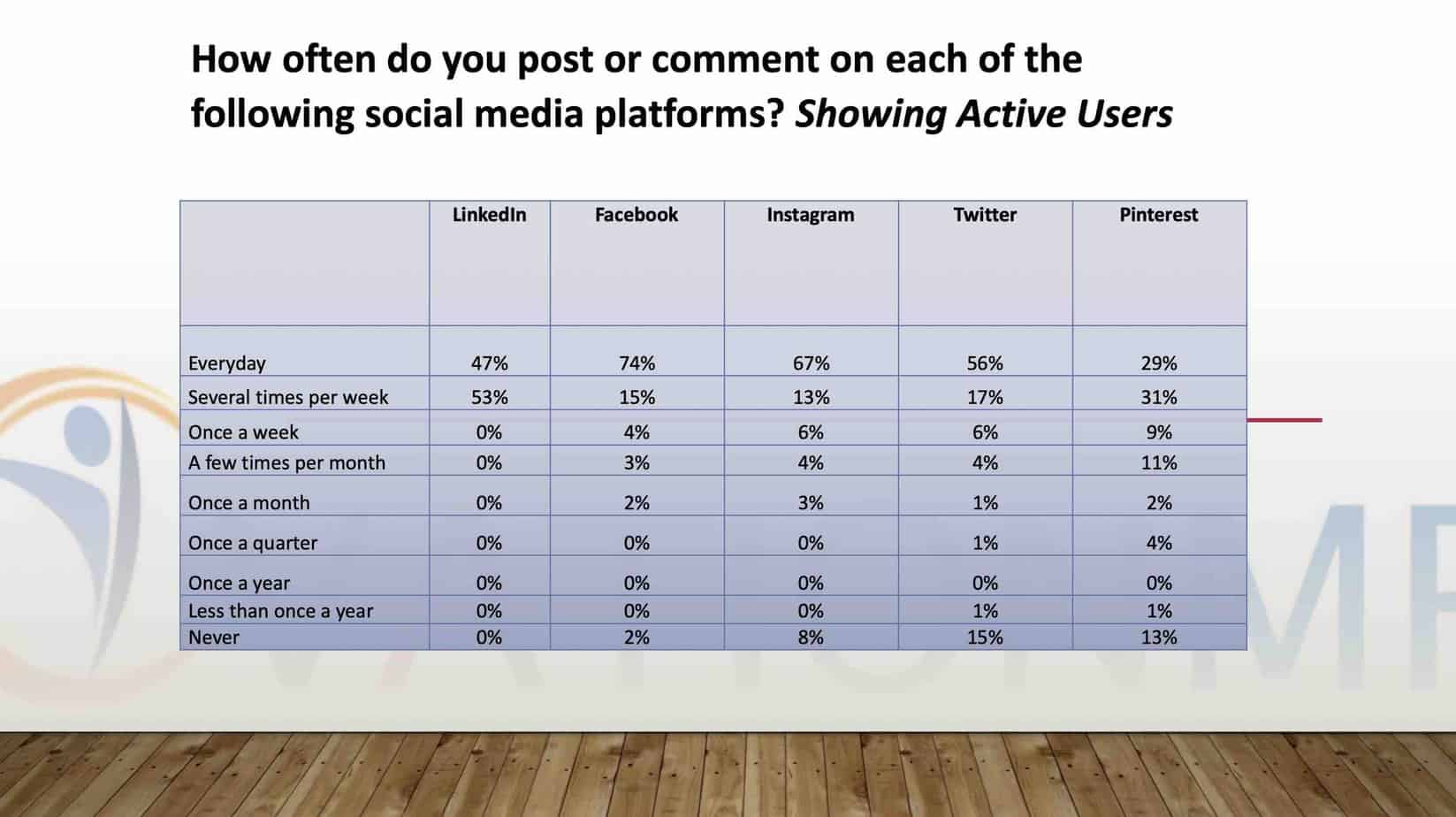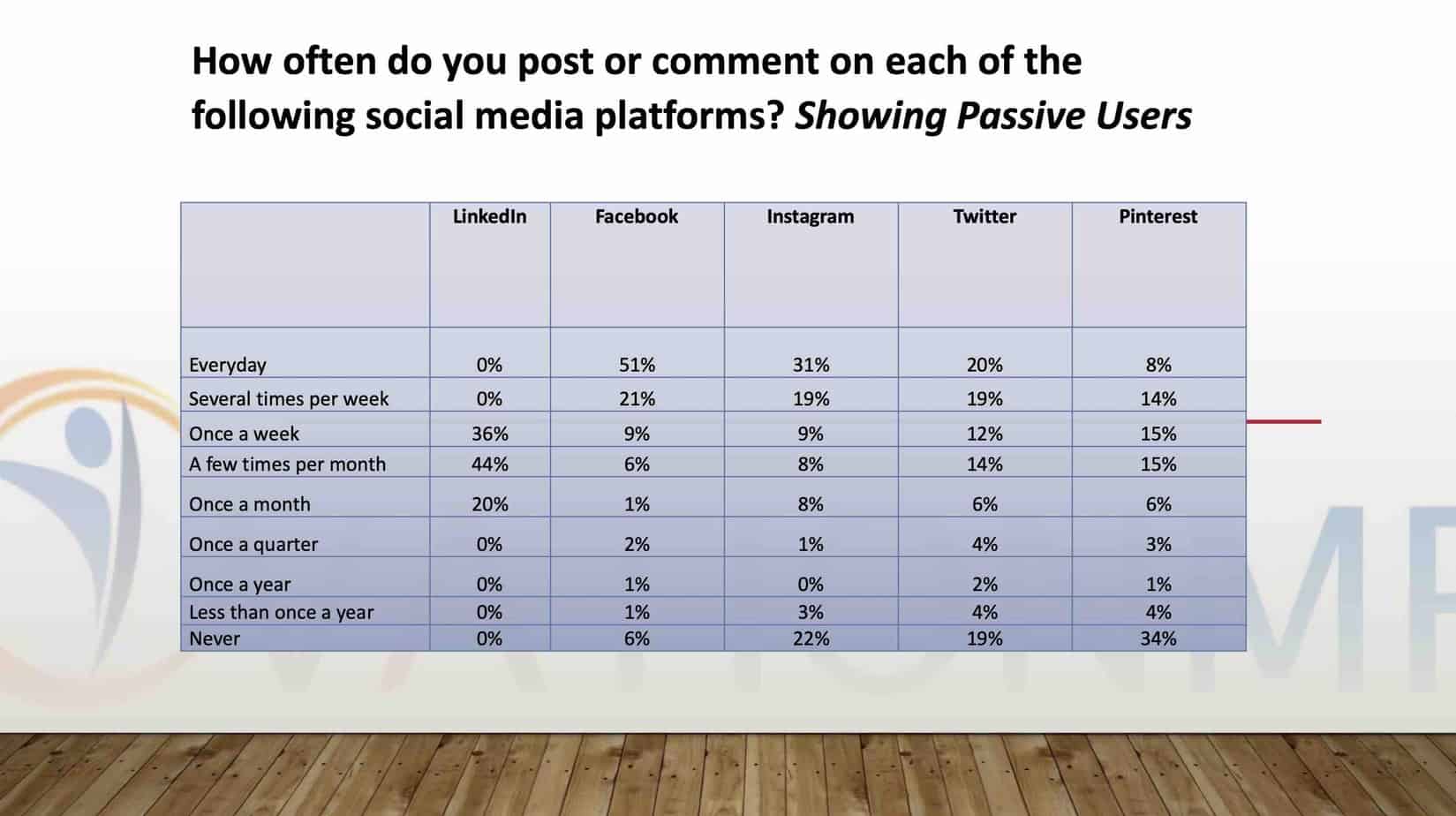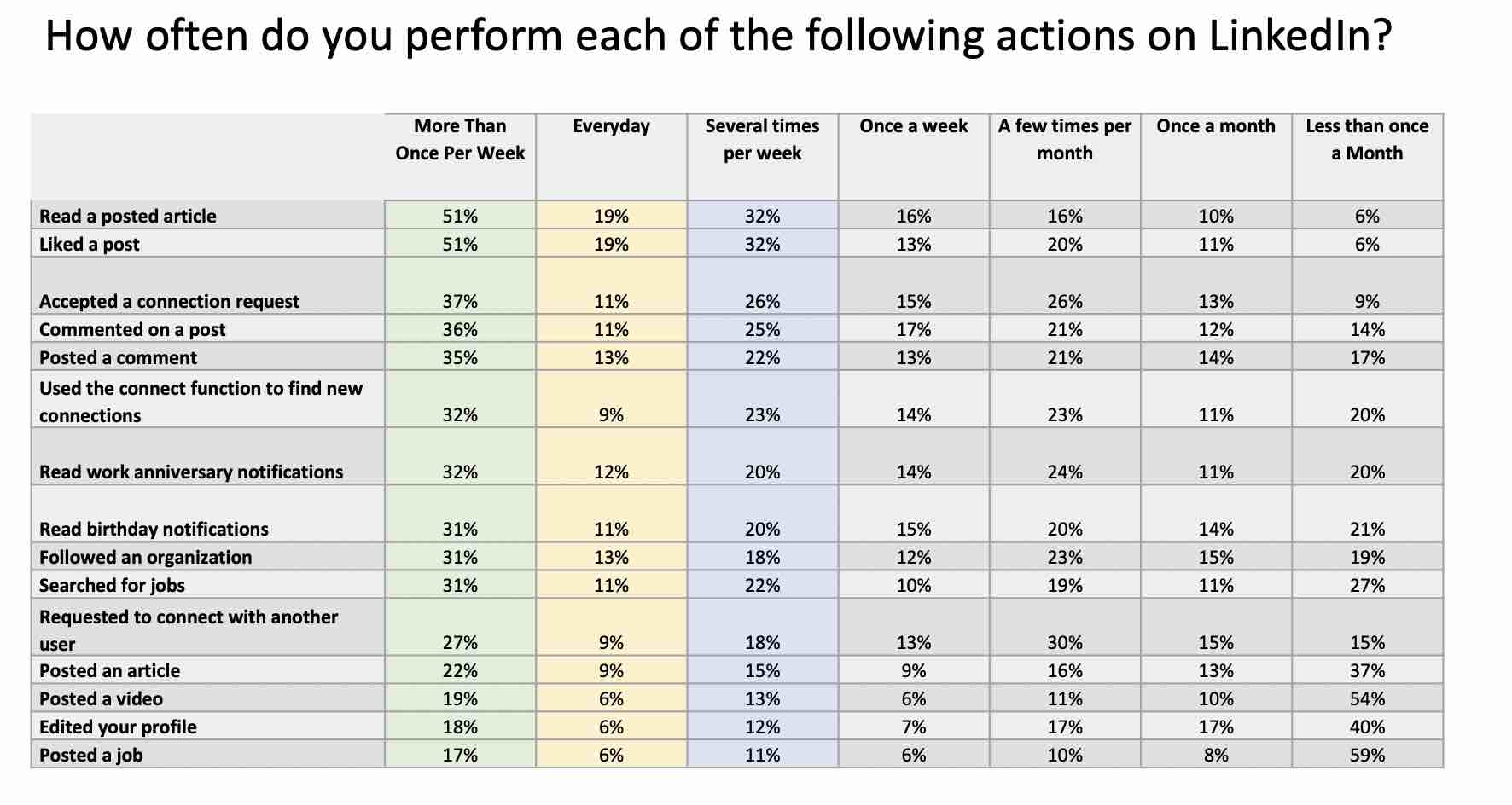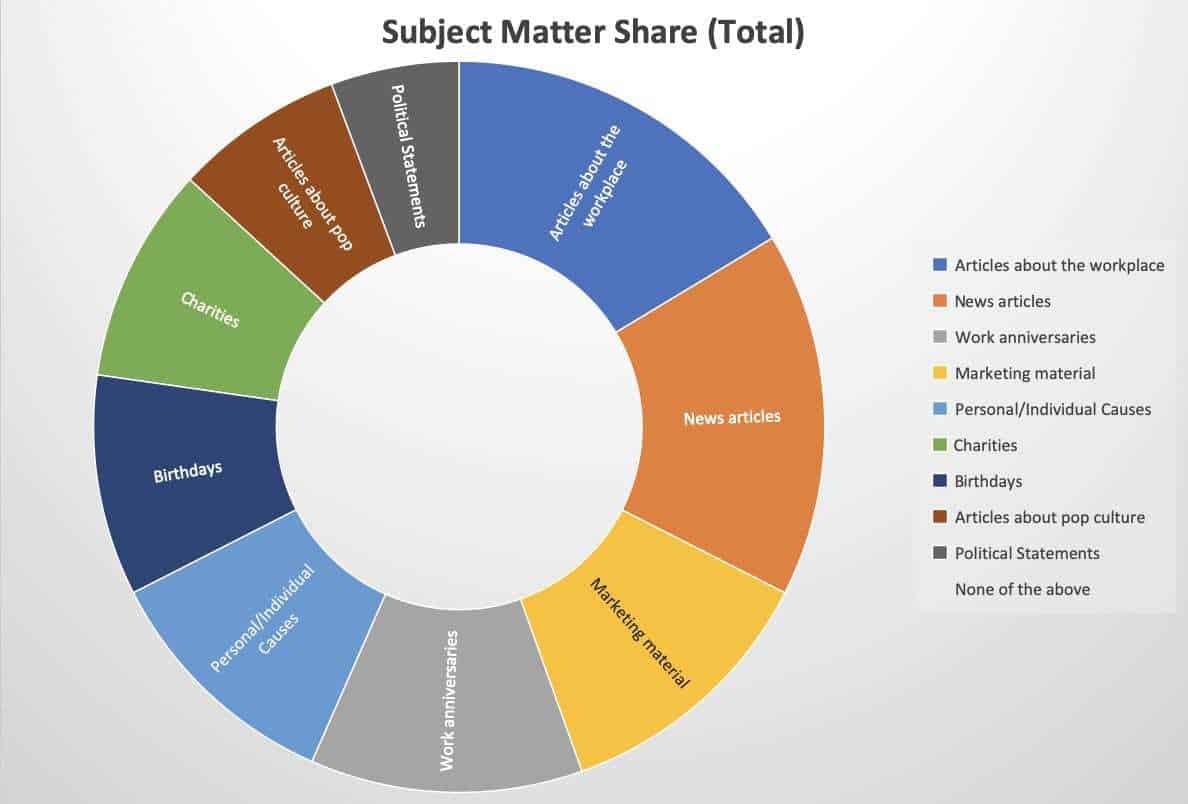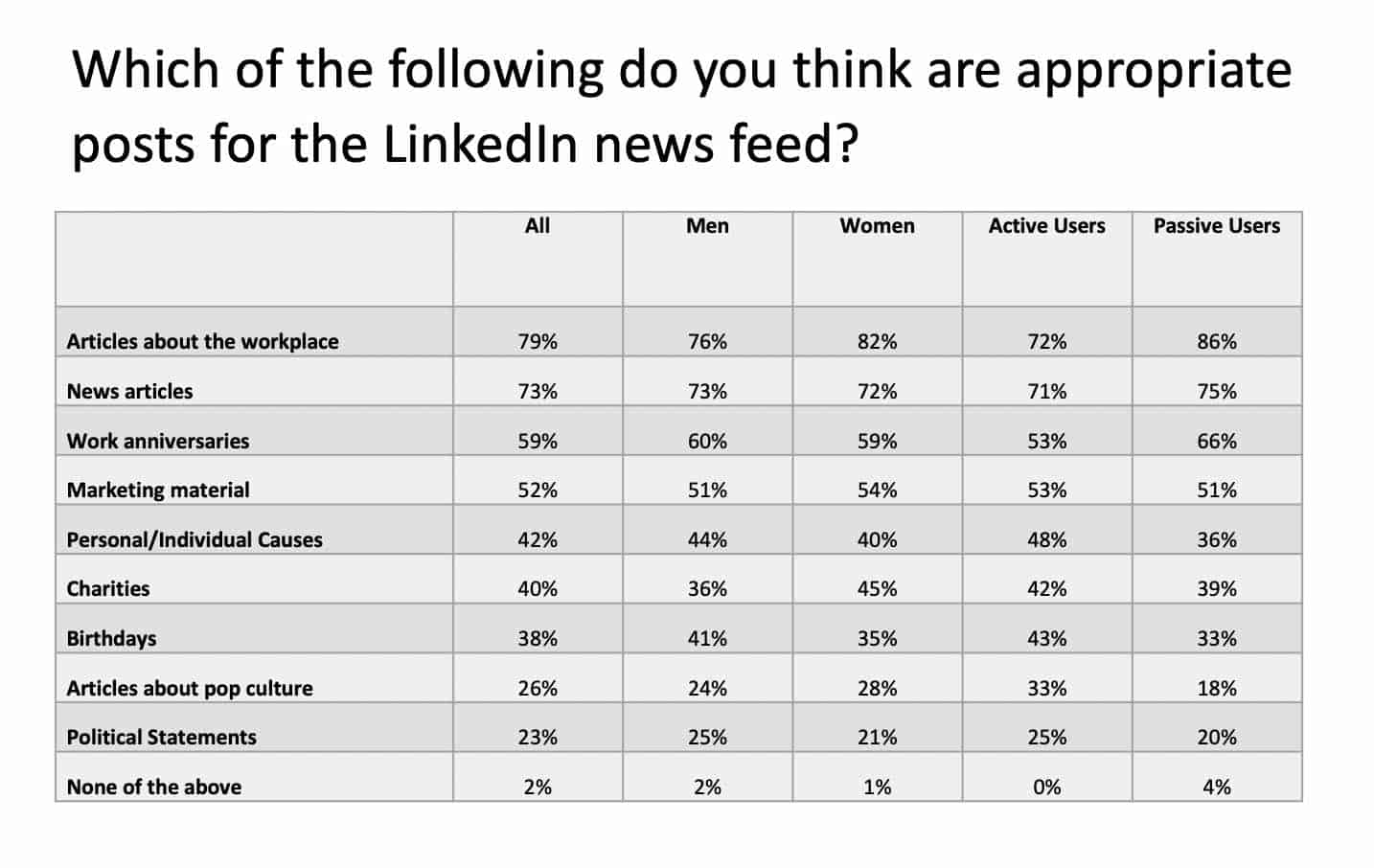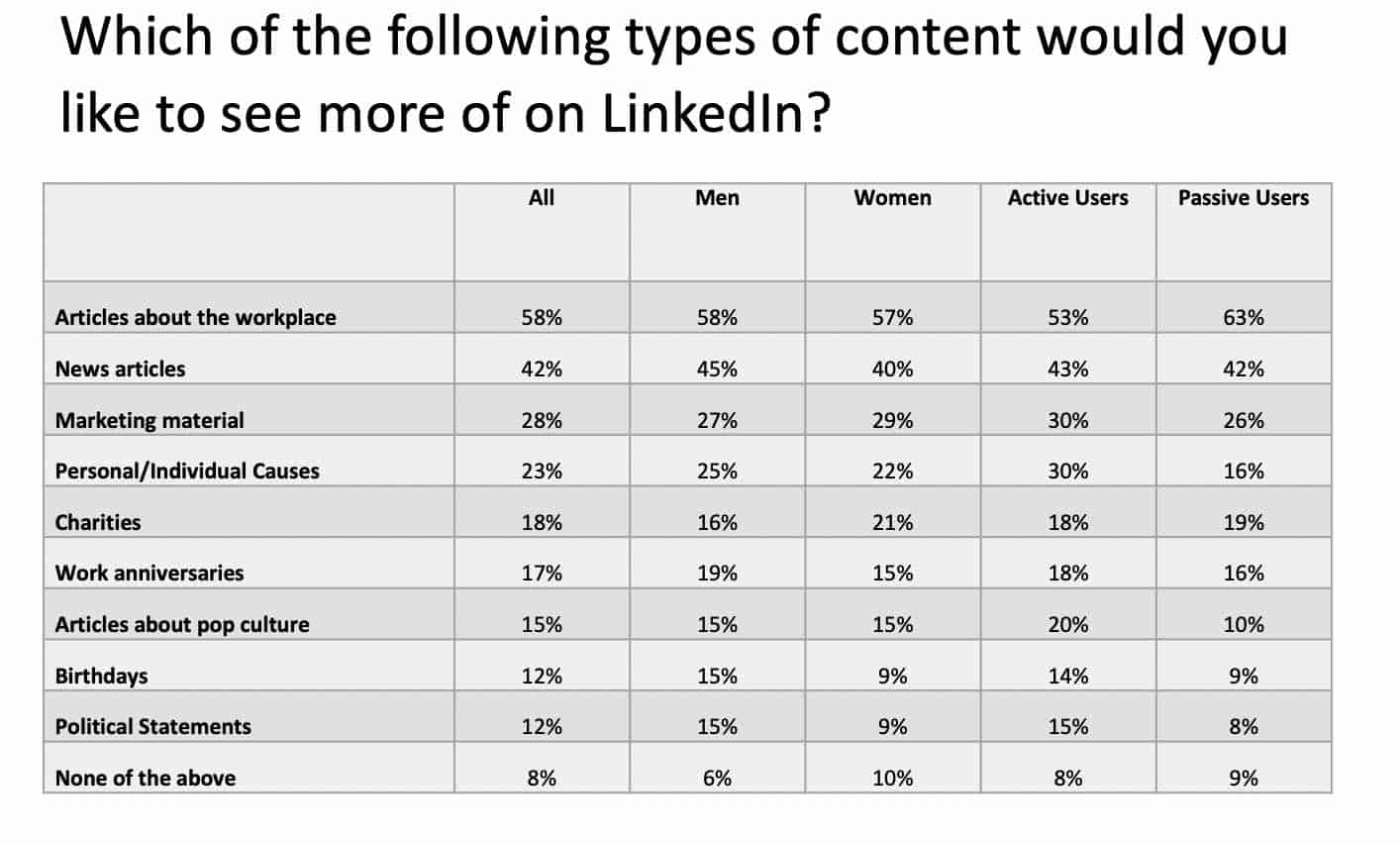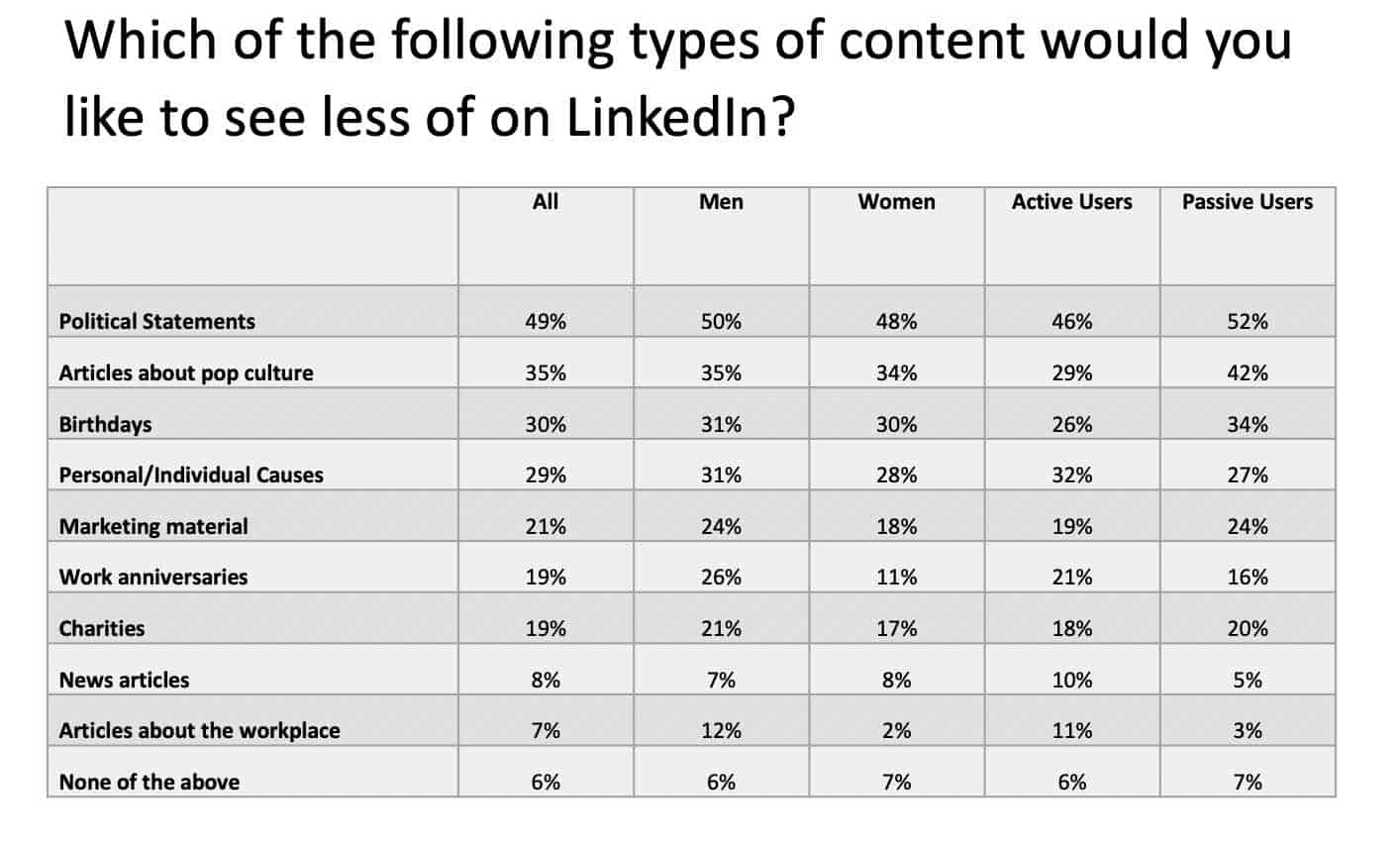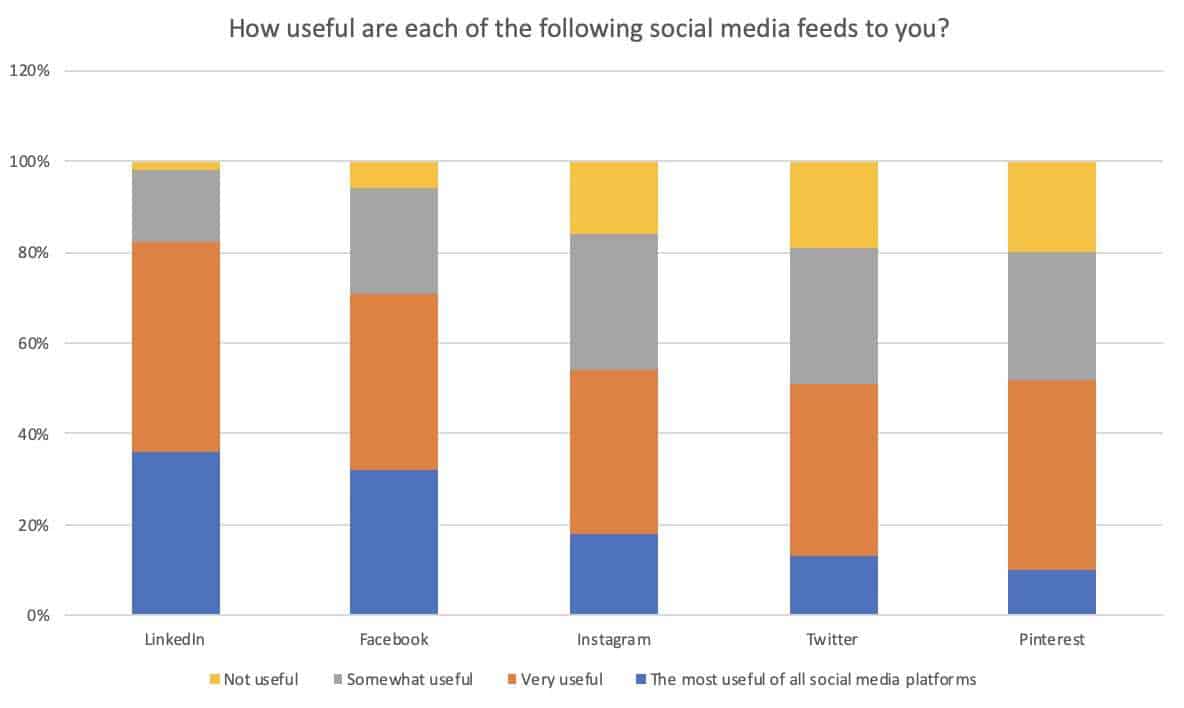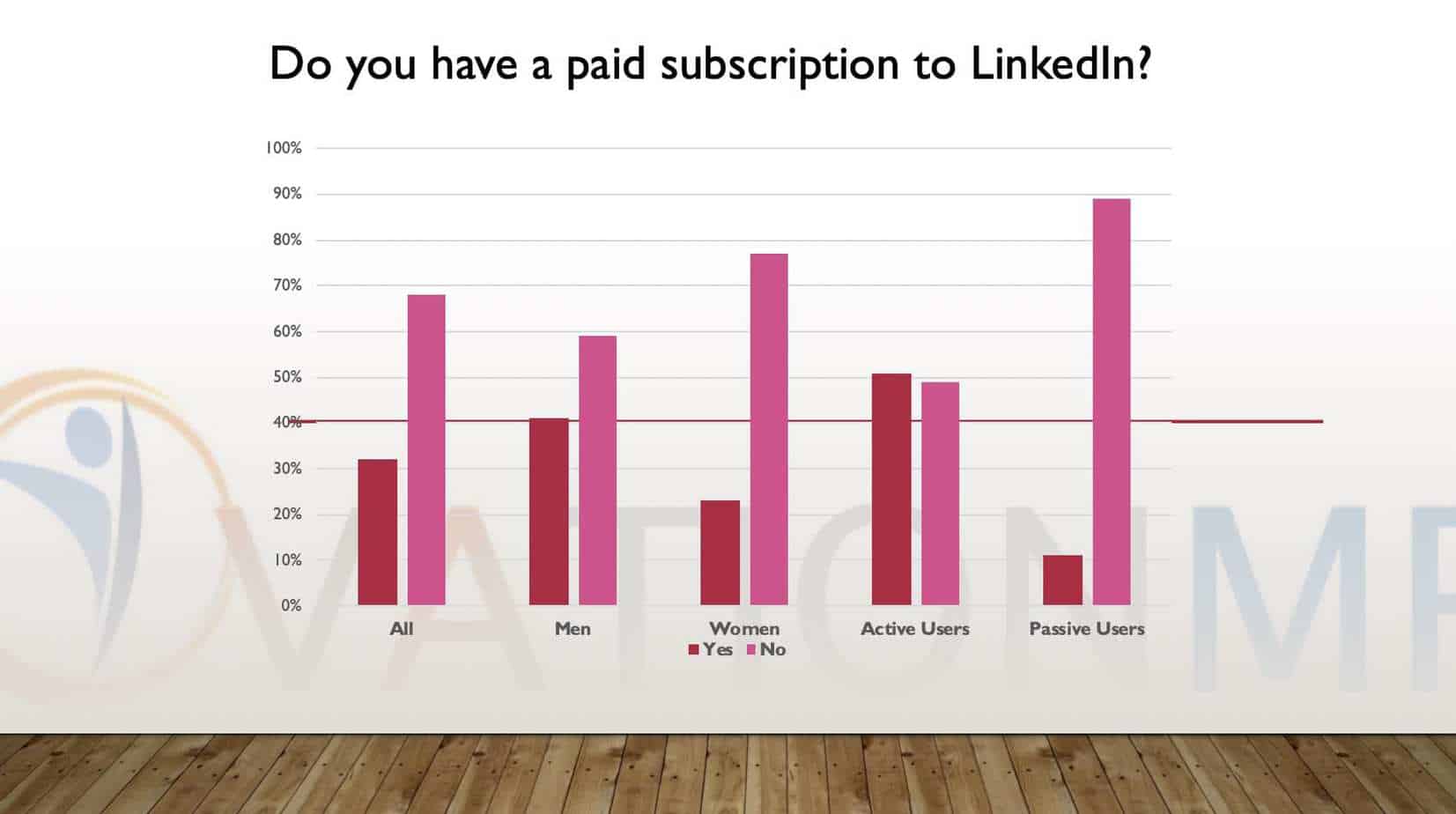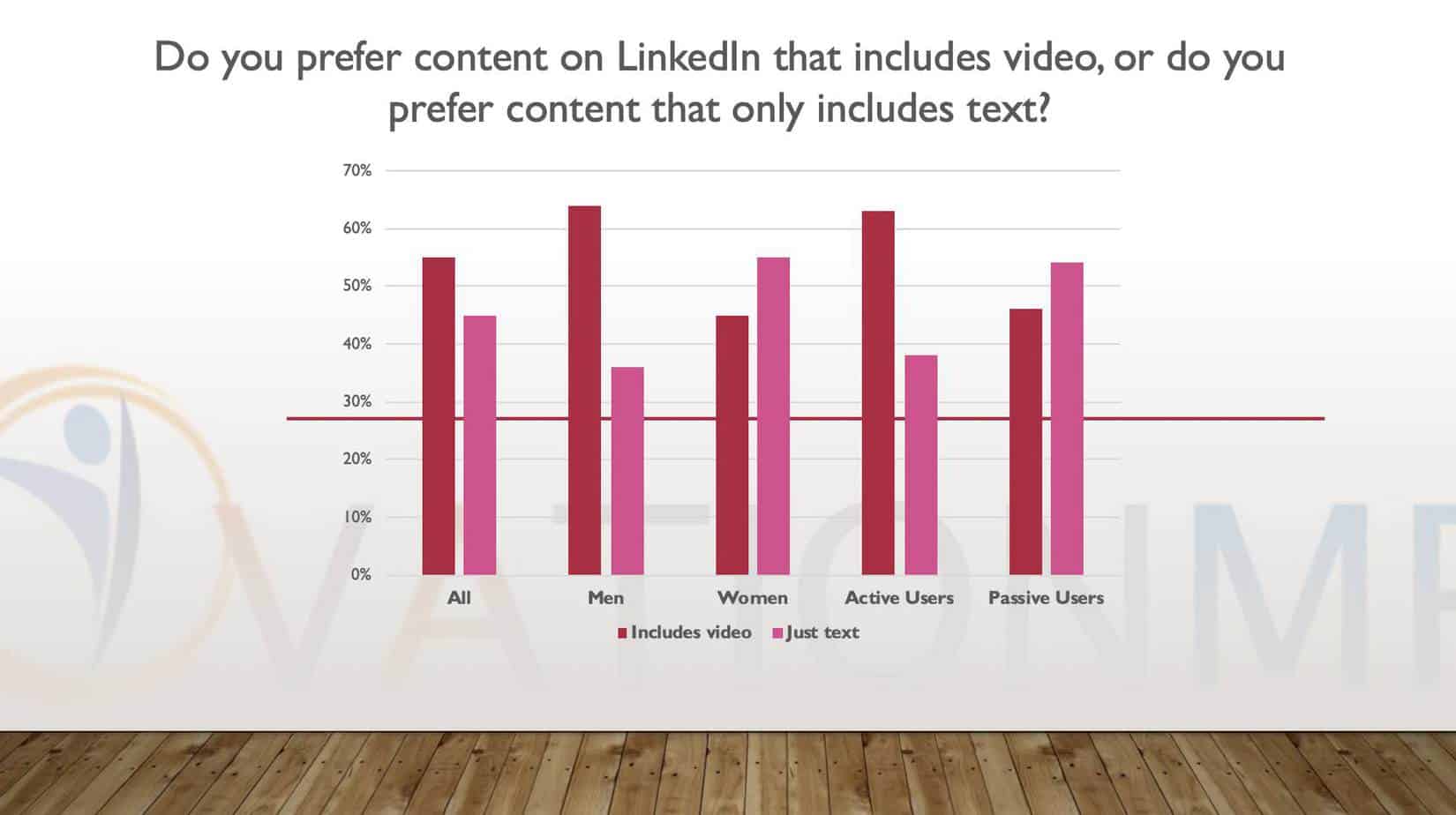Linkedin Users Survey Reveals Preferences
The survey of 300 regular LinkedIn users was fielded from June 5-15, 2019. All respondents were required to have posted a picture on LinkedIn and posted, commented, liked a post, or found new connections in the past month.
We showed the following subgroups in the report.
- Men (N=154)
- Women (N=146)
- Active Users defined as those who post or comment more than once per week (N=160)
- Passive Users defined as those who post or comment once per week or less (N=140)
Below are the answers to some of the questions we sought to answer with the survey.
Are regular LinkedIn users also using other social media sites?
Answer: Absolutely! Regular LinkedIn user don’t limit their social media diet to just LinkedIn. They post or comment on Facebook and Instagram even more often than they post or comment on LinkedIn.
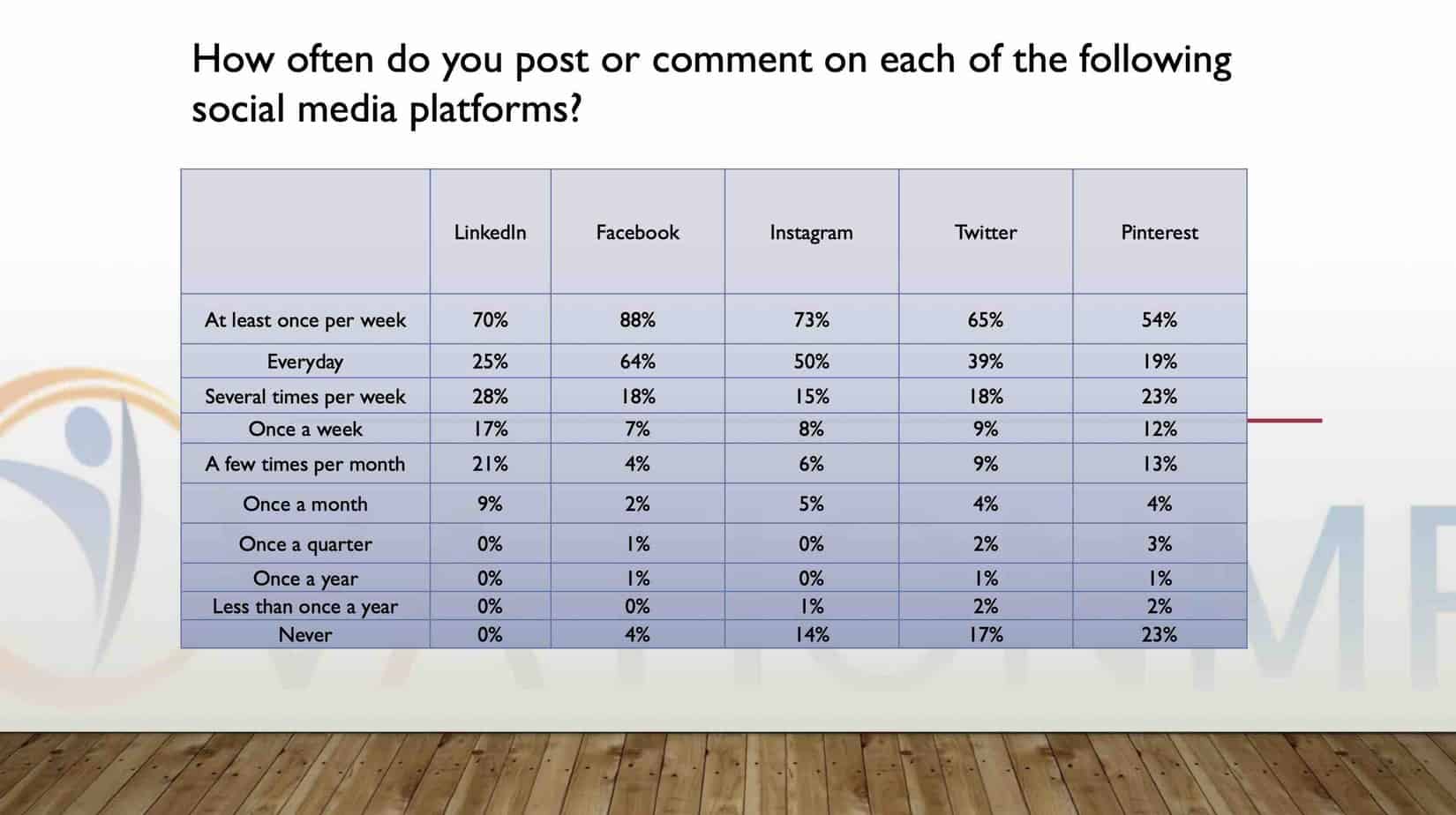
Do the most active LinkedIn contributors post rapidly just as frequently on other sites?
Answer: Yes, with even greater frequency! The majority of the most active LinkedIn contributors post everyday to Facebook, Instagram and Twitter suggesting they are looking to get as much social media attention as possible across platforms.
What are regular LinkedIn users doing on LinkedIn?
Answer: The frequency with which they perform activities more than once per week on LinkedIn can be divided into tiers.
- Tier 1 (>50%): Read articles & like posts
- Tier 2 (35-40%): Post their own comments, comment on other posts and accept connections
- Tier 3 (30-34%): Use the connect function, read birthday and work anniversary announcements, follow organizations and search for jobs
- Tier 4 (20-29%): Request to connect with another user & post an article
- Tier 5 (<20%): Edit your profile, posted a video & posted job
What topics are considered appropriate posts on LinkedIn by regular users?
Answer: Professional topics and not personal topics. A majority of regular LinkedIn users found articles about the workplace, news articles, work anniversaries, and marketing material appropriate, while personal/individual causes, charities, birthdays, articles about pop culture, and political statements are not considered appropriate by a majority of users.
Interestingly, active users are more tolerant of personal content than passive users, perhaps because they are so active across social media platforms.
What content do regular LinkedIn users want to see more of?
Answer: Articles, particularly those about the workplace, but also news articles.
What content to regular LinkedIn users want to see less of?
Answer: The personal stuff they think is inappropriate, particularly political statements, articles about pop culture, birthdays, and personal/individual causes. Interestingly, the most active users are less likely to say they want to see many types of personal content including political statements, pop culture, and birthdays.
How useful is the LinkedIn platform compared with other platforms?
Answer: Unsurprisingly, LinkedIn is the most useful platform for regular LinkedIn users and active users are more apt to find LinkedIn the most useful than passive users, but Facebook is a close second place.
So how does LinkedIn compare head to head with Facebook?
Answer: LinkedIn is seen as more useful than Facebook by regular LinkedIn users. The margin is especially wide among active users.
| 9. How useful is LinkedIn to you compared with Facebook? | All | Men | Women | Active Users | Passive Users |
| Much more useful | 39% | 44% | 34% | 49% | 28% |
| Somewhat more useful | 27% | 27% | 27% | 27% | 28% |
| About as useful | 15% | 13% | 17% | 13% | 17% |
| Somewhat less useful | 16% | 15% | 16% | 10% | 22% |
| Much less useful | 3% | 1% | 5% | 1% | 5% |
How often do regular LinkedIn users accept new connection requests?
Answer: 70% of the time. Well, that’s the median for new connection request accepted by regular LinkedIn users.
| 10. What percentage of the time do you accept new connection requests? | All | Men | Women | Active Users | Passive Users |
| Mean | 61% | 59% | 62% | 61% | 61% |
| Median | 70% | 60% | 75% | 65% | 70% |
Question: How important is including a message when trying to connect with someone on LinkedIn?
Answer: It depends. Often a connection request will be accepted anyway, but a personal message is essential if you don’t know the person that you are trying to connect with.
| 11. What percentage of the time do you accept new connection requests? | All | Men | Women | Active Users | Passive Users |
| I won’t accept the request without a personal message | 14% | 18% | 10% | 19% | 7% |
| I will only accept the request without a personal message only if I know the requestor | 48% | 45% | 52% | 42% | 56% |
| I will accept requests regardless of whether they include a personal message | 38% | 38% | 38% | 39% | 37% |
How many regular LinkedIn users have a paid subscription?
Answer: 32%, or just under 1 in 3. Just over half of active users pay for a subscription.
Do regular LinkedIn users prefer video or text content?
Answer: It’s a mixed bag, just over half prefer videos (55%), while the rest prefer just text (45%). Active users are more apt to prefer video content. With LinkedIn focusing its strategy on increasing its video content, it is clearly focusing on retaining its active users.
To learn more about OvationMR Business Panel solutions or our other Online Sampling and our online methodology for ensuring your success you can visit Panel Quality & Recruitment or Download 2019 PanelBook and/or contact us at info@ovationmr.com.
Andrew Ribner is a research consultant at OvationMR and he also consults with clients on sampling design for various types of online research campaigns and political polling.

